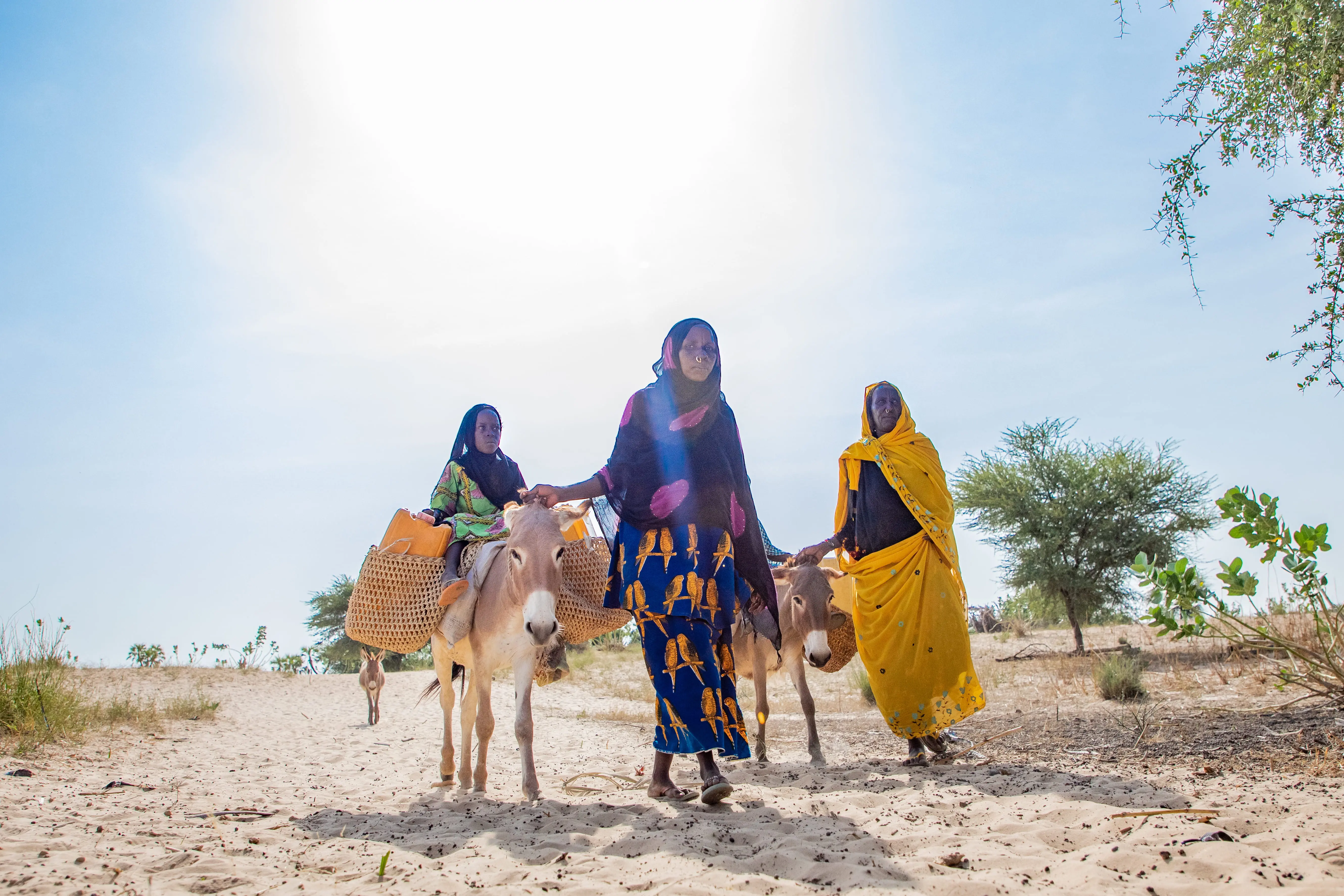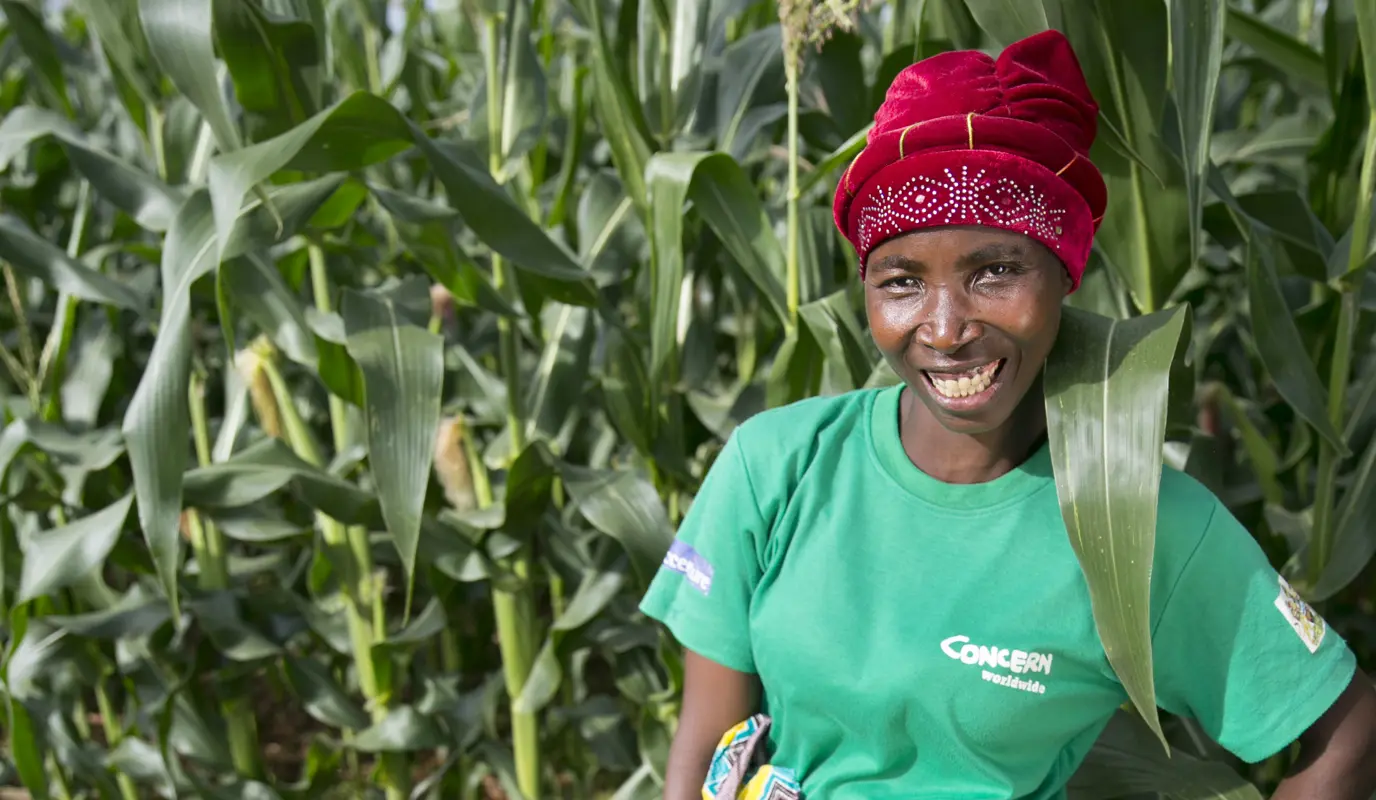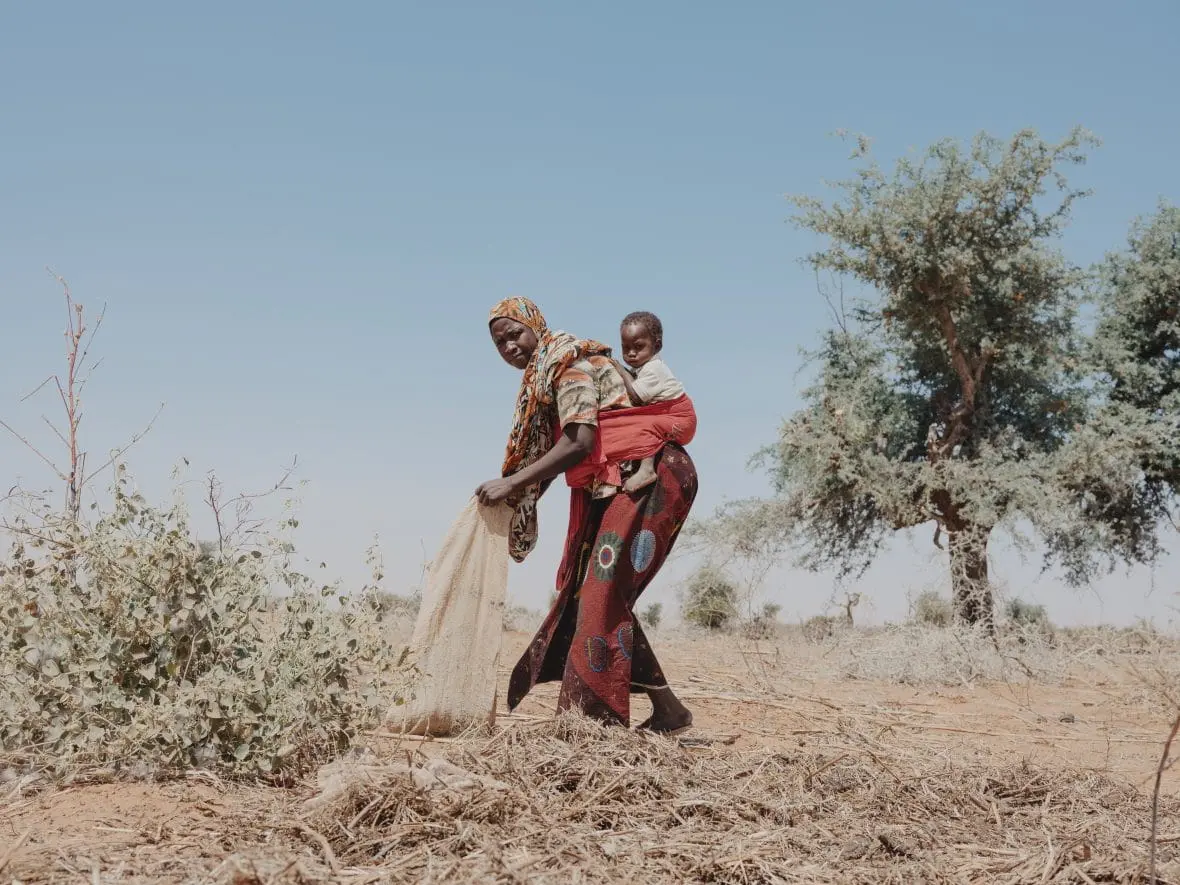News
With 70% of Bangladesh flooded each year, can we break the cycle of crisis?
In 2004, Concern warned of a growing humanitarian crisis in Bangladesh with increasing floods. Now, the country is known as “ground zero for climate change.”
Read MoreIn almost all of the countries where Concern works, climate change is an existential threat whose impacts are already causing greater loss and suffering for the most vulnerable people who live there. The links between climate change and poverty and climate change and hunger are clear.
At first glance, it may seem like the climate crisis is an equal-opportunity one. Many of the extreme weather events linked to global warming aren’t selective with regards to a nation’s income or GDP. We saw this in 2021 with deadly floods in Europe, as well as record-breaking floods in China, and a combination of extreme winter temperatures and hurricanes in the United States. Many organizations charged with ranking the countries most affected by climate change top their lists with countries like Japan and Germany.
Yet higher-income countries generally have more resources to deal with the unavoidable impacts of climate change. Low-income countries do not. Drawing on data and rankings from the Notre Dame Global Adaptation Initiative and Germanwatch’s Climate Risk Index, here is our breakdown (in alphabetical order) of 10 countries hit hardest by the climate crisis.
Between 1950 and 2010, the temperatures in Afghanistan increased by 1.8ºC, and an optimistic view of the climate crisis in the country still shows a minimum increase of 1.4°C by 2050 (the worst case scenario would see a 6ºC increase by the end of this century). Rains have decreased by 40% in the country, and the World Food Program classifies both rainfall-related drought and snowmelt-related drought (owing to the same warming conditions in the Hindu Kush mountains affecting Pakistan to the same effect) as current threats.
The WFP also points to flooding in other areas (and sometimes the same areas affected by drought), due to both heavy spring rainfalls and riverine floods caused by increasing snowmelt. The capital of Kabul and its surrounding regions, which produce much of the country's agricultural yields, are hit especially hard by both drought and flooding, which has increased the threat of hunger.

Coastal communities and island nations are among those facing the highest risks associated with the climate crisis due to rising sea levels. Much like the Philippines, Bangladesh has been fighting the effects of climate change for decades, leaving it Number 7 on Germanwatch’s Climate Risk Index (CRI) for cumulative risk between 2000 and 2019. In this time, the country experienced 185 extreme weather events that cost a combined total of $3.72 billion.
These emergencies affect nearly everyone in the country. According to a 2018 USAID report, 89% of Bangladeshis (approximately 143 million) live in “high” or “very high climate exposure areas.” With 75% of Bangladesh technically underwater, it’s estimated to lose 11% of its land by 2050 due to rising sea levels. This could cause one out of every seven people in Bangladesh to be displaced from their homes.
Chad currently ranks last on Notre Dame’s Global Adaptation Initiative index, which also categorizes it as the fourth most-vulnerable country to climate change and the second least-prepared country for its effects. Over the last 50 years, increasing temperatures, droughts, and use has caused 90% of the country’s largest lake—Lake Chad—to disappear, rendering it a dustbowl.
This is just one example of the degradation Chad has faced over the last century. The Lake Chad basin has become further eroded by heavy rains (another weather extreme linked to climate change). Because desert terrain is not primed to absorb water, the area is prone to floods.

In 2019, when former Prime Minister Joseph Jouthe was the country’s Environment Minister, he compared the climate crisis to violence in his country at COP25: “Climate change is a very big terror in Haiti. It’s very hard for us to deal with climate change.” An ongoing humanitarian crisis in Haiti, along with its high levels of poverty, is partly to blame. The World Bank estimates that Haiti has lost 98% of its forests, making the country even more vulnerable to complex emergencies when they strike.
Many countries in the Caribbean sit in the hurricane belt and suffer the effects of global warming — including the Dominican Republic, which shares the island of Hispaniola with Haiti. However, many of these countries also have better systems for response and resilience in place. Over 96% of Haitians are at risk when a disaster strikes, and the damages sustained in the wake of these emergencies carry a heavy financial burden. The World Bank also estimates that 2016’s Hurricane Matthew caused damages equal to nearly one-third of the country’s GDP. The 2010 earthquake that killed approximately 250,000 people cost 120% of the country’s GDP.
The World Bank estimates that Haiti has lost 98% of its forests, making the country even more vulnerable to climate events when they strike.
Kenya ranks slightly higher than other low-income countries on the Global Adaptation Initiative Index, however this doesn’t mean that the consequences of the climate crisis are any less dire, especially in areas like the northwestern region of Turkana. This area of Kenya is being hit hard as part of a larger drought in the Horn of Africa — the area’s worst in 40 years. For this reason, as well as the losses that have come with that drought (in 2019 alone, drought was estimated to cost Kenya more than $708 million), Germanwatch ranked it among the top countries most affected by climate change in its 2020 Climate Risk Index.
The fact that Kenya’s is the largest economy in East Africa doesn’t exempt it from the risks of climate change. In fact, if the country suffers the economic and infrastructure impacts of global warming, it could have significant consequences for neighboring countries. This is one of the reasons that the Kenyan government has committed significant resources to responding to the crisis and building resilience within its own communities. While it only contributes less than 0.1% of the global greenhouse gas emissions, it has also pledged to cut these emissions by 32% by 2030.
Malawi, along with Mozambique and Zimbabwe, was at the epicenter of 2019’s Cyclone Idai, the costliest and deadliest tropical cyclone in the region’s history. United Nations Secretary General António Guterres called it “one of the worst weather-related catastrophes in the history of Africa,” and overall Idai affected 3 million people, killed over 1,000, and caused $2.2 billion in damages.
However, that was just one of the most recent events in a series of climate variability that dates back to 1961. Increasing weather extremes have contributed to the country’s poverty and hunger rates. While Idai’s floodwaters destroyed crops for many, unpredictable rainfalls and droughts pose greater threats to the country’s agricultural industry, which is how nearly 80% of the working population earns a living.
Ten years before Idai hit, Oxfam noted the increasing stress placed on Malawians — especially women — by climate change. Gender equality in Malawi remains an issue, and one that leaves women out of critical decision-making processes, especially related to climate response and resilience. With issues like water, women once again pick up the slack: “We women have largely been affected in terms of fetching water,” Esther Chanache told Oxfam in its 2009 report. “Previously the rivers would run all year round but now when the rains stop, the rivers dry up. We have to walk long distances.” Interventions like Climate Smart Agriculture are helping Malawi farmers to adapt and cope, but more action needs to be taken to support them in the long-run.

Over 80% of Nigeriens rely on agriculture for their livelihoods, a prospect that has become increasingly risky as the country faces temperatures increasing at 1.5 times the speed as the rest of the world. By the end of this century, climate experts predict an increase of 3º to 6º C, which will have devastating impacts on the Sahel region. Already vulnerable to hunger, water scarcity, and violence, Niger could face even further stress and crisis if the current climate crisis continues at pace.
Since 1968, the country has faced multi-year droughts, which affected nearly a third of the country’s population at the beginning of this century. This has had a direct impact on agriculture in Niger, with the World Bank reporting a decline in harvest size and quality since the 1970s. Conversely, floods are also a recurring hazard, especially in the south. Both of these risks are projected to intensify in the near future, with Niger’s most vulnerable farmers paying the ultimate price.

Just below Bangladesh on the CRI for cumulative risk is Pakistan, which Germanwatch ranks as the eighth most climate-vulnerable country in the world. Last July, temperatures in the Sindh Province city of Jacobabad (which New York Times author Fatima Bhutto called the hottest city in Asia, if not the world) exceeded 126º F, “too severe for human tolerance.” The World Bank calls Karachi, another city in Sindh, a “climate hot spot,” estimating an increase in climate events and their impact on the city’s 14.9 million residents.
Much of this, as Bhutto notes, is due to the rapid deforestation of Pakistan which, upon the country’s founding in 1947, was 33% forest. “Today, we have tree cover of just about 4%,” Bhutto writes, adding that this is “largely caused by the illegal logging by timber mafias.” With less cover, the country is among those whose temperature is expected to rise by 3.9º F in the next three decades. (Pakistan already has one of the highest rates of water stress and scarcity in the world.)
Glaciers in the Hindu Kush, Himalayas, and Karakoram mountains have melted, leading to massive droughts as well as floods. Additional flooding in Pakistan, brought on by the 2022 monsoon season, has been the worst on record in over a century.
For the last several decades, a cycle of crisis in Somalia has severely compromised the country’s ability to cope with one of the main threats it currently faces: climate change. Along with Kenya and Ethiopia, Somalia is currently facing the effects of the worst drought to hit the Horn of Africa in 40 years, with some regions of the country at high risk of famine due to the fallout. Over 60% of Somalis are pastoralists, meaning that their ability to survive depends on consistent-enough rains to keep their flocks healthy and well-fed. Over the last decade, this has become an increasingly harder goal to meet. The same is true for Somalia’s farmers, whose businesses contribute to 65% of the country’s GDP.
One of the reasons for dire conditions in the country is the last three decades of civil war. Conflict has prevented a solid infrastructure from being developed and maintained with government-led climate response systems in place to protect civilians from these shocks. Combined with a high level of vulnerability, this places civilians in an increasingly precarious situation.

In 2016, climate scientist Jos Lelieveld told CNN that parts of North Africa would, at some point in this century, become “uninhabitable” due to increasing temperatures. One of the counties most at risk, he noted, was Sudan. A 2019 report ranked it as one of the top ten countries most affected by climate change, and the most recent data from Notre Dame places the country as the sixth most at-risk based on both its vulnerability and capacity to respond.
Like Somalia and other countries on this list, Sudan’s vulnerability is not just based on droughts and rainfall variability, or the fact that many of its residents rely on agriculture and pastoralism for their livelihoods. Ongoing conflict and instability make life difficult for Sudanese civilians, often leading to displacement which creates a greater demand for already limited resources.
Concern is clear that the climate crisis constitutes the most serious global environmental threat and is a significant poverty multiplier.
The majority of people Concern serves work in farming and food production. Many of these communities are also on the frontlines of climate change. We work with rural communities to promote Climate Smart Agriculture, an approach that helps families adapt to better crops, growing techniques, and soil improvement practices in response to the changing — and often unpredictable — environment.
Our work in disaster risk reduction (DRR) protects the lives and livelihoods of communities and individuals who are most vulnerable to disasters or emergencies. Whether the crisis is caused by nature or humans (or a combination of both), DRR limits its negative impact on those who stand to lose the most. In some cases, we can reduce the size of a disaster, its strength, or even how frequently it occurs. In tandem with this, we can also make sure that those who are most exposed to these hazards are able to better anticipate, survive, and recover.
Our climate response is unique to the circumstances of each community where we work, but one key theme for us is prioritizing indigenous knowledge and nature-based responses. We find solutions that protect, sustainably manage, and restore natural or modified ecosystems to address societal challenges. Nature-based solutions not only help to offset the immediate land degradation caused by climate change, but also address challenges like food security, water security, public health, and social and economic development.